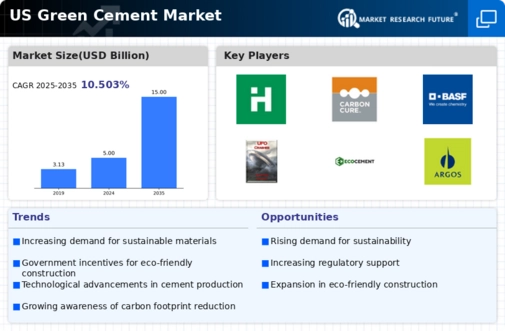US Green Cement Market Summary
The US Green Cement market is projected to grow significantly from 5 USD Billion in 2024 to 15 USD Billion by 2035.
Key Market Trends & Highlights
US Green Cement Key Trends and Highlights
- The US Green Cement market is expected to experience a compound annual growth rate of 10.5 percent from 2025 to 2035.
- By 2035, the market valuation is anticipated to reach 15 USD Billion, indicating robust growth potential.
- In 2024, the market is valued at 5 USD Billion, reflecting a strong foundation for future expansion.
- Growing adoption of sustainable construction practices due to environmental regulations is a major market driver.
Market Size & Forecast
| 2024 Market Size | 5 (USD Billion) |
| 2035 Market Size | 15 (USD Billion) |
| CAGR (2025-2035) | 10.5% |
Major Players
Calera Corporation, Green Cement Technologies, Sika AG, HeidelbergCement, CarbonCure Technologies, BASF, Blue Planet, EcoCement, Argos USA, CEMEX, Zeobond, InterCement, LafargeHolcim, Kuwaits KIP, Stanley Black and Decker





















Leave a Comment